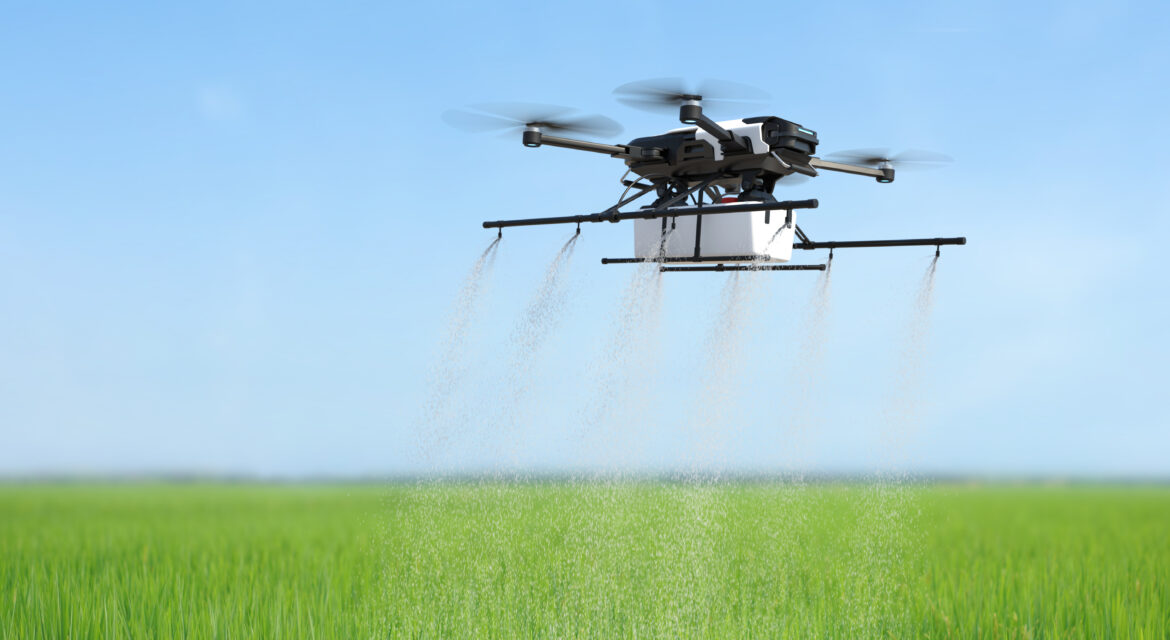No products in the cart.
 04 March 2025
04 March 2025Innovative Agri Inputs – Powering the Next Wave of Sustainable Farming
Agri Inputs Driving the Future of Sustainable Farming
Agriculture is evolving faster than ever. With climate change, soil degradation, and increasing global food demand, farmers and agribusinesses must adopt innovative agri inputs to enhance productivity while ensuring sustainability. Traditional farming methods relying on chemical-intensive inputs and excessive water consumption are no longer viable.
Sustainable farming is now being shaped by biofertilizers, climate-resilient seeds, AI-powered soil monitoring, and smart irrigation—technologies that increase efficiency, restore soil health, and optimize resource usage. By 2050, global food demand is expected to increase by 60%, making innovation in agri inputs essential for ensuring food security.
This blog explores how innovative agri inputs are powering the next wave of sustainable farming, supported by global research, case studies, and real-world applications.
Biofertilizers – Enhancing Soil Fertility Naturally
Chemical fertilizers have contributed to soil degradation, water pollution, and reduced microbial diversity. Biofertilizers provide a sustainable alternative by enriching the soil with beneficial microorganisms that improve nutrient absorption and soil structure.
Global Trends and Growth
- The biofertilizer market is expected to reach $20 billion by 2030, growing at a 12% CAGR.
- Farms using biofertilizers report a 30% increase in soil organic matter, leading to healthier and more resilient crops.
Case Study – Nitrogen-Fixing Bacteria in Brazil
Brazilian soybean farmers replaced synthetic fertilizers with microbial biofertilizers, which help convert atmospheric nitrogen into plant-usable nutrients.
Impact – Soybean yields increased by 25%, while input costs decreased by 20%.
Real-World Example – Mycorrhizal Fungi in Germany
European wheat farms use mycorrhizal fungi biofertilizers, which improve phosphorus uptake and root strength.
Result – Soil phosphorus levels improved by 40%, reducing dependency on synthetic fertilizers.
Why It’s a Game-Changer – Biofertilizers enhance soil health while minimizing environmental impact, making farming more sustainable in the long run.
Climate-Resilient Seeds – Strengthening Agriculture Against Extreme Weather
Climate change has made traditional crops increasingly vulnerable to droughts, floods, and pests. Climate-resilient seeds are engineered to withstand these challenges, ensuring higher productivity in unpredictable weather conditions.
Global Trends and Growth
- The climate-resilient seed market is projected to grow by 18% annually, reducing climate-related crop failures.
- Drought-tolerant and salt-resistant crop varieties have helped farmers reduce crop loss by 40% in high-risk areas.
Case Study – Drought-Tolerant Corn in Africa
African farmers growing drought-resistant corn varieties have maintained stable yields despite prolonged dry periods.
Impact – Corn production increased by 30%, ensuring food security in water-scarce regions.
Real-World Example – Flood-Tolerant Rice in Bangladesh
Bangladeshi farmers now cultivate flood-resistant rice varieties, allowing them to continue farming despite rising sea levels.
Result – Crop yields improved by 25%, ensuring stability for rural communities.
Why It’s a Game-Changer – Climate-resilient seeds ensure food security by adapting crops to changing environmental conditions.
AI-Powered Soil Health Monitoring – Precision Farming at Scale
Soil degradation is one of the biggest challenges in modern farming. AI-driven soil health monitoring tools help farmers assess soil conditions in real time, allowing for precise nutrient and water management.
Global Trends and Growth
- AI-powered soil monitoring has improved land productivity by 35% globally.
- Farms using IoT-based soil sensors have reported a 40% reduction in fertilizer use while maintaining high yields.
Case Study – Smart Soil Mapping in the U.S.
A U.S. wheat farm integrated AI-powered soil sensors to analyze nutrient deficiencies and soil moisture levels.
Impact – Fertilizer use was reduced by 20%, while wheat yields increased by 15%.
Real-World Example – IoT-Enabled Soil Analytics in India
Indian farmers use satellite-linked soil monitoring devices to determine optimal crop selection and fertilization strategies.
Result – Crop mismatches decreased by 30%, leading to higher overall farm productivity.
Why It’s a Game-Changer – AI-powered soil analytics help reduce costs, enhance farm efficiency, and protect the environment.
Smart Irrigation – Maximizing Water Efficiency
Water scarcity is one of the biggest threats to global agriculture. Smart irrigation technologies optimize water usage, ensuring crops receive the right amount of water at the right time.
Global Trends and Growth
- Smart irrigation systems have reduced agricultural water consumption by 30% globally.
- Farms using AI-driven water models have seen 25% higher yields with 50% less water usage.
Case Study – Drip Irrigation in Israel
Israeli farmers implemented precision drip irrigation, delivering water directly to plant roots, reducing evaporation and runoff.
Impact – Water usage dropped by 60%, while crop productivity increased by 20%.
Real-World Example – AI-Based Irrigation in India
Indian farmers use AI-driven irrigation models, reducing dependence on unreliable rainfall and excessive groundwater extraction.
Result – 5 million farmers now have stable water supplies, ensuring continuous food production.
Why It’s a Game-Changer – Smart irrigation reduces water waste, increases efficiency, and ensures climate-smart farming.
Conclusion – The Future of Agriculture Depends on Innovation
Sustainable farming is no longer a luxury—it’s a necessity. The shift toward biofertilizers, AI-driven soil monitoring, climate-resilient seeds, and smart irrigation is shaping the next wave of sustainable agriculture.
For farmers, agribusinesses, and policymakers, the focus must now be on scaling up these innovations to ensure food security, reduce environmental impact, and maximize productivity. The question isn’t whether the industry will adopt innovative agri inputs—it’s how quickly and effectively farms can integrate them into daily operations.
The future of farming is here—will you be at the forefront of change, or will you struggle to keep up?
Lead the Sustainable Farming Revolution with Invade Agro
Invade Agro provides cutting-edge solutions to help farms integrate innovative agri inputs and precision agriculture technologies.
- Biofertilizers for Soil Health
- AI-Powered Precision Farming
- Climate-Resilient Seeds & Smart Irrigation
Take the next step in sustainable farming. Contact us now to integrate advanced agri inputs into your farming practices and drive the future of food production. The time to act is now—join the revolution!
[xs_social_share]



